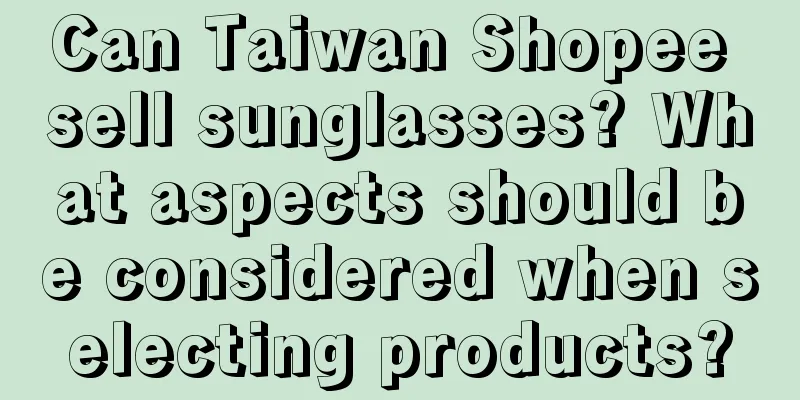Detailed explanation of the operating costs of the three e-commerce giants: Where does the pressure on merchants come from?

In recent times, the controversy surrounding the "refund only" policy of e-commerce platforms has once again become heated. Some merchants complained bitterly in media interviews, saying that they had encountered the phenomenon of "malicious refund only" and that "freeloaders" had taken advantage of loopholes in the platform's system. But if we dig deeper into these reports, we will find that even for the merchants who have publicly complained, the proportion of orders that have only been refunded is only in the single digit. Why did the refund-only system, which was originally introduced to crack down on low-quality merchants, amplify the conflicts between buyers and sellers and even become the "last straw" that broke the camel's back for merchants? In addition to some emotional impact, some merchants' "condemnation" of the refund-only system largely reflects the business difficulties of merchants. This leads to a topic: Among the operating costs of Taobao, JD.com and Pinduoduo, which one is the largest expense for merchants? 01. Taobao has issued a “new rule”, will traffic become cheaper?On July 26, Taobao made intensive adjustments to its merchant rules. Among them, measures related to merchant operating costs were mainly concentrated in two aspects: First, a basic software service fee of 0.6% of the order turnover is charged to all merchants in the Taobao, Tmall, Xianyu and other Taobao systems, and the annual fee previously charged to Tmall merchants is cancelled. The focus of widespread attention is that in the past, Taobao C stores did not have to pay fees to the platform based on the store's order turnover, but now all merchants face a basic software service fee of 0.6%. At the same time, many relief measures have been introduced. For small and medium-sized merchants who receive no more than 120,000 yuan in annual payments, the basic software service fee will be 100% refunded; for mid-sized merchants with a transaction amount of 120,000 to 1 million yuan, 50% of the same amount of advertising coupons will be received; for merchants with high customer orders and wholesale, the maximum charge for a single transaction will be 60 yuan before 2025. The second is to "improve efficiency" in traffic promotion costs, that is, to "reduce the burden" on merchants by improving ROI, encouraging them to increase paid promotion efforts, and the platform can also achieve stable revenue growth. Currently, Taobao's traffic promotion fees mainly include through trains, gravity cubes, keywords, full-site promotion, precise groups, event pit fees, etc. The most discussed is the "full-site promotion" that Alimama started internal testing in April, hoping to lower the threshold for merchants to place advertisements. According to media reports, some merchants who participated in the full-site promotion said that advertising expenditures were reduced by 5%-10%, and GMV and conversion rates increased by more than 10%; third-party research data showed that the ROI of top merchants increased by 5%-8%, and that of mid-level merchants increased by 12%-15%. After the rules were adjusted, the operating costs of merchants on the Taotian platform were mainly concentrated in four aspects:
It can be seen that in the operating costs of merchants in the Taotian system, traffic promotion may account for more than 50%, far exceeding after-sales costs such as "refund only". This is probably why Alibaba chose to return the basic software service fees to merchants in the form of advertising coupons and "improve efficiency" in traffic promotion costs. It may reduce traffic costs to some extent, but it is an indisputable fact that merchants rely on paid promotion. 02. Can JD.com achieve equal traffic between self-operated and POP?Unlike Alibaba, merchants on JD.com can be divided into two categories, corresponding to different fee standards and operation management models. One is the JD.com self-operated model. The most common is that the brand and JD.com sign a purchase and sales contract, and the costs of invoice tax points, logistics warehousing, and after-sales are all borne by JD.com. The operating costs of merchants are mainly deposits and gross profit protection fees. Depending on the brand and category, the gross profit protection fee is generally between 10% and 30%. The calculation formula is: gross margin = transaction price x gross profit protection ratio - JD.com gross profit. If the purchase price of a product is 100 yuan, the merchant and JD.com negotiate a 20% gross profit protection fee. When the product is sold at 150 yuan, the gross profit protection clause will not be triggered and the purchase price will be directly settled; if the product is sold at 100 yuan, the gross profit protection clause will be triggered, and the merchant will only receive 80 yuan in repayment. The other is the POP model, which is similar to the merchants on the Tmall platform. They need to pay JD.com deposits, transaction service fees, operation support service fees and other fees. The transaction service fee is the same as Taotian's basic software service fee, which is also charged at a rate of 0.6%; the operation support service fee is equivalent to "commission". According to different categories, the operation support service fee rate is mostly between 1%-10%. Some categories of sports services are as high as 20%-50%. Some categories such as sports nutrition charge operation support service fees in the form of a combination of basic deduction points + advertising deduction points. If merchants use JD Logistics' integrated solution (warehousing and logistics), it will also involve more than 5% of warehousing costs. Regardless of whether it is a self-operated model or a POP model, marketing expenses such as promotion points, category coupons, and circle of friends advertising account for a considerable proportion of operating costs. According to tracking statistics from business consulting firm Jiuqian, the GMV ratio of JD.com's self-operated merchants and POP merchants is 7 to 3, far higher than JD.com's expected 4 to 6; "China Logistics and Procurement" magazine once mentioned in a report that for the same product, the traffic resources that POP merchants spend 100 yuan to buy can be purchased by self-operated merchants for only 30 yuan; the conversion rate of a product, the order rate of POP merchants is about 3%, while the order rate of self-operated merchants is about 20%; this can also be supported by the "double counting plan" proposed for self-operated merchants, that is, 70%-80% of the promotion costs can be used to offset the gross profit protection fee. The "traffic equality" between self-operated merchants and POP merchants has naturally become the focus of public opinion: the marketing costs invested by self-operated merchants may not be less than 15%, while the marketing expenses of POP merchants are generally around 10%. Judging from the traffic alone, it is not a "fair competition". In order to promote "traffic equality", JD.com has launched a series of measures after 2023, such as the "Spring Dawn Plan" to lower the entry threshold for small and medium-sized merchants, and implemented a fee reduction policy for 80% of categories, hoping to gain a price advantage by giving benefits to merchants. In terms of the traffic distribution mechanism, Liu Qiangdong reportedly requires that "the price weight in traffic distribution cannot be less than 50%." If POP merchants have a price advantage over self-operated merchants, they are expected to get more traffic. 03. Pinduoduo, which has a low price, gives traffic at a low price?Pinduoduo's operating costs can also be broken down from two aspects. The first is the technical service fee, which is divided into basic technical service fees, category technical service fees, “10 billion subsidy” technical service fees, live broadcast technical service fees and other types. The basic technical service fee is the service fee that Pinduoduo generally charges to its merchants, which is the industry-standard 0.6%; for virtual goods such as online services, personalized customization, and game services, a category technical service fee of 0.1 yuan to 1 yuan is charged for each order, and special categories such as prescription drugs and jewelry are charged a technical service fee of 1% to 5%; the commission rate for "10 billion subsidies" products is between 1% and 3%, and most of them do not exceed 5%; the live broadcast technical service fee is that Pinduoduo charges merchants an additional service fee of 0.4% to 3.4% for orders completed through the live broadcast channel. Then comes the traffic delivery. Currently, there are mainly delivery modes such as full-site promotion, search customization, oCPX promotion, and multiple scenarios (activity resource positions). The most talked-about topic is "full-site promotion". Merchants can choose the bidding method according to different needs. For example, low-priced products can be bid according to the "target investment-production ratio". As long as the profit and loss ratio is calculated, they can quickly get volume through promotion; merchants who have clear requirements for the return on advertising expenditure can choose to bid according to "transaction", which corresponds to the advertising cost of a transaction. Referring to the online marketing and transaction service revenue of Pinduoduo's first quarter 2024 financial report, it is estimated that the proportion of merchants' traffic delivery and transaction service fees are basically the same. Compared with traffic allocation, Pinduoduo merchants may be more concerned about the algorithms and traffic distribution mechanisms that are deeply tied to low prices. Different from Taobao and JD.com's algorithms that used to favor brands, Pinduoduo's traffic distribution logic is based on low prices for individual products. The lower the price offered by the merchant, the more traffic is allocated. As long as the low price advantage is maintained, there will be natural traffic, and there is no need to even spend money on traffic promotion. The seemingly simple and crude logic is not without reasonable explanations: small and medium-sized businesses can reflect about 15% of their marketing expenses on prices, "create" price advantages on the entire network, and then obtain Pinduoduo's algorithm recommendations. Merchants use less energy to sell goods, users buy low-priced goods, and Pinduoduo continues to deepen the "low-price mentality", forming a positive cycle driven by algorithms. A brand once told the media that in their traffic structure on Pinduoduo, 70%-80% of the traffic comes from recommendations rather than active searches by users. If there is a price advantage, the proportion of commission costs, after-sales costs and traffic costs can be controlled at 5%-7%, while other platforms usually require 12%-27%. The cost is that the entire operation logic is based on single products rather than stores, resulting in a low repurchase rate for products. Even if there is repurchase behavior, it mostly comes from the recommended association of "previously purchased". When Taobao, JD.com, Douyin and others start to raise prices, that may be the real test for merchants. In the context of "price comparison across the entire network", the era of brand premium has ended, small profits but quick turnover will be the norm, and the importance of controlling marketing expenses is self-evident. 04. The money for “buying traffic” is the real mountainAfter 25 years of market competition, the basic operating costs of e-commerce platforms have become flat, and the biggest factor that determines whether merchants can make money is precisely the traffic cost. The corresponding scene is that more and more brands have begun to operate on multiple platforms, opening stores on different platforms such as Taobao, Tmall, JD.com, Pinduoduo, and Douyin at the same time, studying the user preferences of different platforms and making targeted operational adjustments, or spending money to buy traffic, or exchanging traffic at a low price, and are unwilling to miss any possible traffic pool. Those who feel a sense of crisis are precisely the small and medium-sized businesses that have no brand effect, no private domain traffic, and low average order value. The lack of brand effect means that they cannot get natural traffic, and the low average order value means that there is little room for promotion expenses, and they cannot compete with brand merchants in marketing... These various shortcomings that cannot be changed have made them the most cost-sensitive group of people. Although the proportion of "freeloaders" in the orders of small and medium-sized merchants is less than a single digit, they have invisibly become an "unbearable burden." Go beyond the surface and return to the essence. When merchants complain about "only refunds", it is the e-commerce platforms that need to reflect on how to reduce the traffic costs of merchants. The platforms earn enough advertising fees, but the merchants are under pressure due to operating costs. After all, this is not a healthy ecology. |
<<: The first cup of milk tea in autumn hides the social intimacy value of young people
Recommend
What to do if a new Amazon store has no traffic? How to get traffic?
When you first open a store on Amazon, there is de...
Xiaohongshu Private Message Delivery Common Problems Optimization Guide
As a unique spotlighting platform of Xiaohongshu, ...
The copywriting that even your mother understands is the good copywriting
Just kidding, a good copywriting is one that even ...
How to report Amazon misplaced categories? How to choose the right category?
In the vast world of Amazon products, each product...
From Wanglaoji to Zhong Xuegao, have all AI products failed?
This article starts from people's perception o...
Behind the popularity of “City Not City”, exploring the full-link opportunities of inbound tourism
As the voice of inbound tourism in China grows lou...
2024 Spring Festival Homecoming, Xiaohongshu Sponsoring Spring Festival Gala, Competition in the Milk Tea Industry
The Spring Festival has passed. During your return...
After the delivery fee adjustment, what’s the difference when eating McDelivery?
"McDelivery has changed, will the dining expe...
Losing millions of fans overnight, what minefields did the internet celebrities step on as they were hit hard by the backlash of traffic?
Traffic is the key to success and traffic is the k...
Brands sell stories
This article analyzes the key logic of brand stori...
What are the consequences of Lazada’s incorrect pricing? What should I do if Lazada has incorrect pricing?
No matter what platform you open a store on, merch...
Is printer sharing a profitable business?
With the development of the sharing economy, why a...
WeChat + DeepSeek, several scenarios I can think of
There was another big news over the weekend—— WeCh...
The truth and illusion of Douyin's "lowest price"
When watching e-commerce live broadcasts, users al...
What is the Shopee advertising credit recharge exchange rate conversion tool? How to use it?
If a store wants more exposure and traffic, promot...









